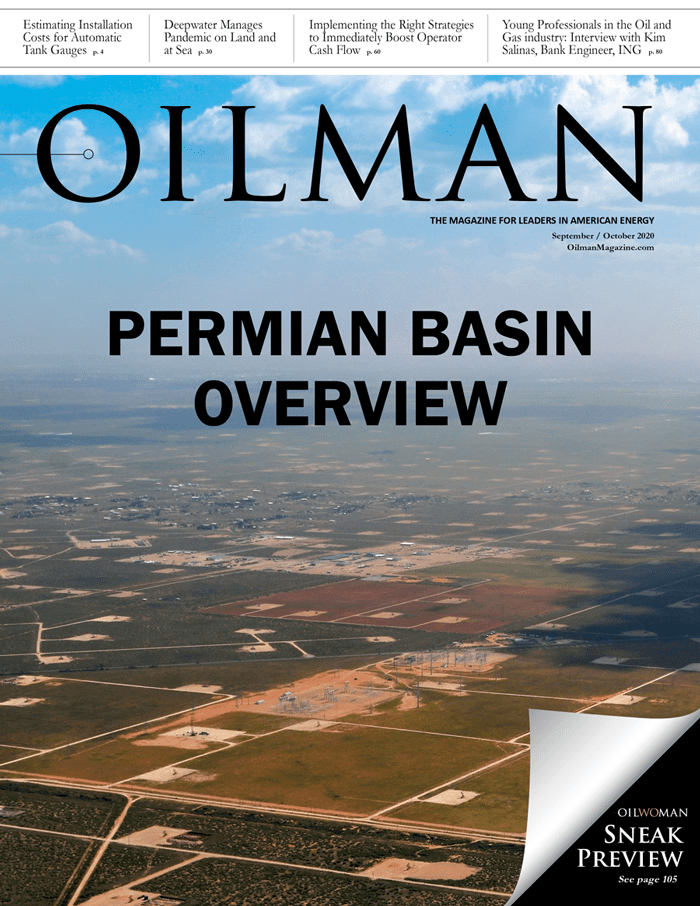Several influences play integral roles in the evolution of the midstream sector, with compliance and safety often at the heart of the industry’s pursuit of operational excellence. Recent regulation changes are among the most current stimuli in midstream operations, which have led to several operator trends in recent months. The impact of such modifications has already been felt throughout the industry, leading operators to seek the comprehensive solution of third-party compliance management and its many benefits.
Compliance Trends in Midstream Operations
Documentation is key to compliance, which is why operators must ensure records are complete and accessible – fragmented documentation can lead to incidents, violations and fines. Such significance has led to a trend in the midstream sector of compliance documentation assessment. The Pipeline and Hazardous Materials Safety Administration (PHMSA) discusses records as needing to be traceable, verifiable and complete (TVC), meaning documentation can be traced to original records, verifiable via “complementary but separate documentation,” and complete with all required information. Records maintenance is an ongoing process, but operators are initiating the assessment process to establish a compliance baseline.
Maximum allowable operating pressure (MAOP) is a must-have feature of pipeline operations, but not all assets possess adequate documentation to substantiate their MAOP. Previously, certain pipelines constructed before 1970 were exempt from specific MAOP testing requirements; the exemption, however, is no longer applicable, leading to a trend of MAOP reconfirmation for relevant pipelines. Relating directly to TVC recordkeeping, proper MAOP compliance demands adequate documentation, which some post-1970 pipes lack. Pipelines that cannot support MAOP determination within Class 3 and 4 locations and high consequence areas with TVC records must work toward reconfirmation of MAOP and establish more reliable documentation.
Assessment of consequence areas is a necessity in determining operational, maintenance and emergency procedures, which is why integrity assessments of certain pipelines outside of HCAs have come into focus. This trend is relevant to the newly defined moderate consequence areas (MCAs), which have less potential impact to infrastructure and the public, but justify the need for proper safety assessment.
Impact on Operators
Operators will discover several impacts on their operational processes resulting from these trends. Assessing and filling gaps in recordkeeping, especially for more senior pipelines, will absorb noticeable overhead and personnel as records are reviewed and processed. This will grow dedicated time in combination with MAOP reconfirmation for relevant pipelines, especially for larger companies with extensive mileage. Similarly, threat identification and integrity assessments are likely to create a workload that internal departments will find difficult to complete with new considerations and processes.
Operators must not only plan for changes, but understand how relevant processes should be implemented to support current operations while monitoring forward movement toward compliance. However, developing and implementing new procedures and processes will be the greatest hurdle operators face during this time. Some requirements are new to operators’ radars while coming with vague descriptions beyond agencies’ objectives for operator safety, leaving operators to determine how to assess records for TVC principles, determine which pipelines qualify for MAOP reconfirmation, and evaluate which areas qualify as MCAs.
PHMSA has granted operators a timeline that focuses on development with additional time for implementation. However, even with years of available time, it is imperative for operators to prudently plan how to avoid pitfalls that can lead to compliance violations. With process development and documentation as the earliest deadlines, operators should know how they will meet the requirements. Developing the roadmap to achieving the objectives – time-consuming and costly if not done correctly –is the next step.
In preparation for implementation deadlines, operators must devote time to executing new procedures, budget for support, and dedicate resources for compliance review. One can estimate that, on average, operators will commit upwards of two months of full-time hours to each asset’s records review. Moreover, MAOP reconfirmation can take as long as two to ten years of consistent testing, depending on asset size, for larger operators, which will be incremental to existing integrity workload. Furthermore, for evaluation to determine Class 3 and 4 locations and MCAs, operators should anticipate dedicating three to five months per asset, depending on size, for proper analysis. Such progress will take noticeable time to implement; combined efforts, however, are likely to take years for many operators to establish procedures and complete requirements in addition to existing workload. This has sparked a growing concern within the industry regarding how operators are to know when they’ve successfully fulfilled their responsibilities or, perhaps more significantly, when they’ve missed the mark altogether.
Third-Party Compliance Management Benefits
A slew of factors goes into managing changes in pipeline processes, and many operators will find the tasks overwhelming amid the regular demands of daily operations. By understanding how such requirements can impact operators, another trend in oil and gas operations that has gained significant ground in the last five years is third-party support via contracted services. This trend, however, is saving operators time and resources.
Third-party management companies that specialize in oil and gas operations, inspections, testing and compliance offer a host of benefits in areas of pipeline operation. Such services provide operators with experienced personnel that is familiar with the vast array of processes involved in instituting and managing operational changes. Combined with a breadth of specializations, this depth of experience can offer a premier level of expertise in operational technicalities, from technology to regulations. The most significant draw for many operators is the cost savings that can be achieved by the nature of third-party management. Operators often find that they can experience a substantial reduction in daily and annual operational costs via third-party management, and addressing compliance issues such as those discussed here is no different.
A common struggle for operators is determining which regulations apply to which pipelines, a temperamental pain point. However, third-party compliance management assists operators in jurisdictional analysis to ensure that each asset is appropriately managed and documented to avoid violations brought on by misunderstandings or oversight. Such analysis can assist operators in anticipating potential issues with assessment and management cycles as they relate to compliance-driven schedules.
Third-party compliance management also supports operators with records review and assessment. In addition to documentation being traceable, verifiable and complete, documentation must be properly retained and accessible. Given that many pipelines have been in operation for decades, operators must be aware of what documentation they have, where it is located, and what it does not accomplish. Third-party compliance management lets operators focus on operations while managing the headache of physical and digital documentation.
In a similar thread, operators often stumble with documentation during audits. While agencies tend to provide advanced notice, operators often need additional support to ensure that applicable records are readily available, manuals always remain current, and compliance gaps are continually addressed. Third-party compliance management, however, looks ahead to assess records in advance of audits and help operators develop a foundation on which to base their compliance. In this way, third-party compliance management can make the difference between operators being caught in the headlights of unexpected questions and operators presenting agencies with well-prepared documentation.
Third-party compliance management also takes into consideration the operators’ budgets. Compliance is no small matter for pipeline operations, and operators must stay in compliance while ensuring the profitability of their organizations. This is true in every scenario, whether it is a small company looking to maintain existing assets or a large corporation with acquisitions on the horizon. Consequently, third-party compliance management providers work to achieve compliance in a manageable way that assists with budget forecasting. With economies of scale and direct cost reduction, such providers are often able to offer operators comprehensive solutions at a much lower cost than internal methods.
Lastly, operators often seek third-party vendors to train their internal personnel on compliance. From control room management to field safety, the need for training and education is a constant requirement with a fluid compass. As standards, best practices and regulations evolve, so must training objectives. Third-party compliance management addresses these scenarios with on-the-mark methods that help secure operators’ understanding of their responsibilities at every level of operation. From individual qualification to team training, third-party compliance management designs training sets and instructs personnel on the most efficient and safest ways to achieve company goals. This mindset of focusing on overall performance at every stage of operations benefits operators no matter how they utilize such a service, internally for their own staff or with contracting personnel that has already been through extensive training.
Trends in midstream operations are often led by outside influences on the oil and gas market, and compliance aspects are no exception. Consequently, operators must work to modify their existing processes while simultaneously developing new ones to accommodate regulating agencies’ objectives. This can be a monumental task for some operators; however, as the industry has shown its propensity for innovation, operators can now find expert support via third-party compliance management. By leveraging unparalleled operational experience with compliance expertise, such services can save operators time, money and, perhaps most importantly, a record of compliance violations they never saw coming.
Headline photo courtesy of Canva
Louis Krannich, is VP Compliance and Technical Operations, LineStar Integrity Services, a fully integrated suite of pipeline compliance, technology and integrity maintenance.
Whitney Vandiver, is a compliance specialist, NuGen Automation, LLC, a premier SCADA integration and IT/Network management company that also operates the nation’s largest third-party control center.






